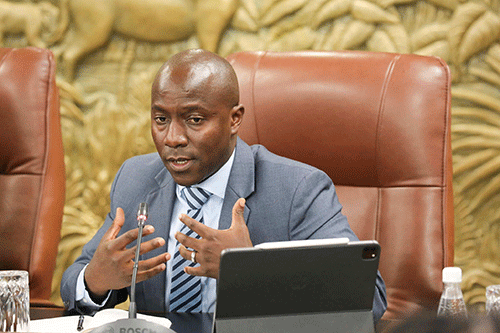After 20 years, Namibia has failed to make any notable progress in achieving targets set out in Vision 2030.
Launched in 2004 by former president Sam Nujoma, the national vision was designed to promote the creation of a diversified, open market and industrialised economy.
When it was launched, Vision 2030 promised a resource-based industrial sector and commercial agriculture, placing great emphasis on skills development.
In addition, the national vision was aimed at promoting competitiveness in the export sector in terms of both product quality and differentiation.
Yesterday, presidential economic advisor James Mnyupe forewarned that Namibia needs to redouble efforts, particularly to prop up the secondary industry to help drive economic growth.
“We have not made progress in 20 years in changing the fundamental economic structure of our economy. We must double the contribution from the secondary sector to achieve the targets. The primary sector is a problem… because we have very little control of commodity price fluctuations,” Mnyupe said during an interview with this publication.
Furthermore, with six years left to achieve Vision 2030, the targets are 10% primary, 42% secondary and 48% government sector of gross domestic product (GDP), GDP and GDP per capita growth of 6.2% and 4.4%, respectively.
This a low unemployment level of 2.3%, and an inflation rate averaging 4.5% per annum, trade deficit at 3.3% GDP and a budget deficit at 1.5% GDP
In 2004, when the national vision was launched, the unemployment rate stood at 33.8%, with a 20% primary and 15% secondary sector share of GDP, and inflation averaged at 10%.
The trade deficit as a percentage of GDP was at 6.0%, and the budget deficit was above 3%.
Mnyupe said currently, the secondary share stands at 15.8%, while the tertiary share of the economy is at 65%.
Official documents indicate that Namibia should avoid heavy reliance on the primary sector as the only driving force for economic growth.
However, the presidential advisor, who doubles as the country’s green hydrogen commissioner, added that green hydrogen is the answer to economic emancipation because it dives into numerous sectors through the entire value chain.
As such, Namibia aims to become a green hydrogen superpower by leveraging its natural resources.
Government plans to use green hydrogen extensively to decarbonise its economy, and enhance energy security nationally and regionally.
Namibia’s first large-scale vertically-integrated green hydrogen project is progressing well.
This project is being implemented by Hyphen Hydrogen Namibia, who emerged as the preferred bidder for Namibia’s US$10 billion green hydrogen project.
Namibia took the first step in 2021 to position itself at the forefront of worldwide aspirations for green hydrogen production by setting in motion plans to develop green hydrogen as part of the Southern Corridor Development Initiative (SCDI).
The SCDI forms part of the //Kharas region, with the multi-billion dollar investment by Hyphen Hydrogen Energy.
Once fully developed, the green hydrogen project is expected to employ an estimated 3 000 people, while some 15 000 jobs are expected to be supported over the four-year construction period.
Over 90% of these jobs are expected to be filled by Namibians.


